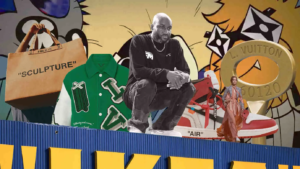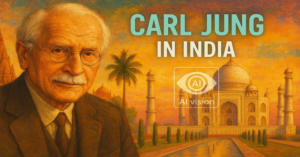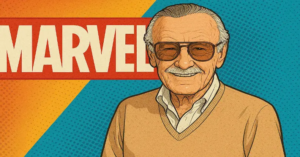Virgil Abloh: Fashion’s Cultural Architect

This Virgil Abloh documentary paints a comprehensive picture of the influential fashion designer and considers the industry’s path forward with greater diversity.
Virgil Abloh Introduction: The Nexus Fashion Lady
Few names carry as much weight in the fast-moving landscape of fashion as Virgil Abloh. Feted as a visionary with a tendency to erase the boundaries between art, music, and design, Abloh was more than a designer — he was a cultural architect. His influence does not just redefine how we look at streetwear but also how fashion intersects with culture, race and identity.
And just as Abloh once said, “The most important thing to me is to always put myself in other people’s shoes,” a philosophy that underpinned his work’s inclusive, boundary defying agenda. This blog takes a deep dive into the man of the hour, Virgil Abloh, and the ways in which he forever changed the fashion industry.
Virgil Abloh Early Life
The Roots of a Visionary
Abloh, born in 1980 in Rockford, Ill., to Ghanaian immigrant parents. Raised in a working-class household, Abloh’s youth was centered on his rigorous work ethic, and the rich cultural heritage of his upbringing. He grew up amid a stew of American Midwest culture and African influences; it was a practice run for his future amalgam of global aesthetics.
Virgil Abloh Education: The Seeds of Innovation
Abloh’s education followed the path of a mind that was most fertile when it had both structure and a bit of creative oxygen to breathe. He graduated from the University of Wisconsin-Madison and received a bachelor’s degree in civil engineering. He went on to study for a master’s degree in architecture at the Illinois Institute of Technology, and his thesis on “Post-Modern Architecture” was well received.
The specificity, rigor, and sense of space that comes with architecture greatly shaped Abloh’s method as a fashion designer. He articulated looks in architectural terms, as designs abstracted and reassembled, occasionally deconstructed, like his skeletal tweed suits.
BECK By Kieran Scott: The Cultural Architect Was Born

From DJ Booths to Design Studios: Breaking Into Fashion
Prior to starting Off-White, Virgil’s love of music saw him take on roles as a DJ and creative director for hip-hop musicians. His friendship and work with Kanye West was also a turning point. Kanye once famously said of Abloh, “Virgil is one of my favorite designers.”
After earning West’s attention, Abloh helped to launch the creative agency DONDA, where he learned the ropes of art direction and fashion. It played a big part in Abloh’s move from music to fashion.
Off-White: The Intersection of Street And Luxe
Abloh started Off-White in 2012, which he marketed as “the gray area between black and white as the color off-white.” It soon played a nouveau symbol of modernity — streetwear’s brute force and luxury’s elegance entwined.
Virgil Abloh What Made Off-White Revolutionary
Virgil Abloh Signature Look
Quotation marks (well, “SHOELACES”) and zip-ties changed the way we think of branding — it’s not just a logo, it’s a declaration.
Cultural Commentary
Abloh defied the traditional rules of fashion, making use of irony, appropriation, and concepts of ownership in design.
Virgil Abloh Collaborations
A partnership with Nike for The Ten collection turned classic sneakers into collectible art objects, changing sneaker culture forever.
To some extent, Off-White was a cultural juggernaut, popularizing the so-called “athleisure” aesthetic and redrawing the lines of streetwear.
Fashion Identity: Virgil Abloh Cultural Commentary
Betting on Black Creativity and Inclusion
As Louis Vuitton’s first Black artistic director, Abloh was a path-breaker who brought Black creatives to the forefront in an industry often slammed as elitist. He was also open about the responsibility he had to pave the way for others:
“I’m building on the work of true giants. It’s my responsibility to ensure the next generation has a clearer road.”
Abloh’s very existence in fashion challenged long-held racial biases, and his work continued to celebrate Black culture — reaching from the rich tapestry of the African diaspora to the company of Black artists and musicians he worked with.
Designing a Revolution Against the Most Fad-Obsessed Fashion World
Abloh’s work often embraced deconstruction, the process of taking clothing apart and reimagining it, and an approach that had as much to do with metaphor as it had to do with asking questions and building new answers around the tropes of society.
For example, his reliance on industrial labels and exposed stitching signified transparency, the breaking down of the “black box” of luxury fashion and the rendering of the design process visible and accessible.
The Louis Vuitton Era: A Historic Appointment
It is one of those rare moments in fashion, when the appointment of a creative director is not only historic, but brings with it almost the weight of a nation.
The First Black Artistic Director in Louis Vuitton’s History of Men’s Wear
In 2018, Abloh was named the Artistic Director of Louis Vuitton’s Men’s Wear, the first Black person to assume the position in the company’s 160-year history. This appointment was a significant moment, one that announced a cultural shift in power structures in fashion.
Vision and Impact at Louis Vuitton
- Runway Innovation: His shows were performances that combined the worlds of fashion, music and art, drawing younger and more diverse audiences.
- Collaborative Spirit: Abloh collaborated with artists such as Yayoi Kusama and brands including Supreme in an era of luxury and street culture blurring.
- Sustainability: He had initiated eco-minded efforts, and was known for upcycled materials and sustainable production.
Above and Beyond: Virgil Abloh as a Multiversed Creator
Virgil Abloh Art, Music, and Architecture
But Abloh’s creativity didn’t just stop at clothes; he was an all-around artist. He also worked with:
- Art Installations: Shows in institutions including the Museum of Contemporary Art Chicago displayed his work outside of fashion.
- Furniture Design: His collaboration with IKEA led to affordable, contemporary furniture that combined industrial design and everyday utility.
- Music Videos & Visual Arts: Abloh also created music videos and art installations that reflected concepts of identity, race, urbanism, interpretation of technology, and futurism.
His interdisciplinary mindset made him an archetypal cultural architect, one who designed not only fashion but the wider creative terrain in general.
Philosophy and Design Aesthetic
The Power of the Text, Of Quotation Marks
Abloh’s signature use of quotation marks was playful, but it was also profound. It made viewers and wearers wonder, what was the meaning:
Was SHOELACES just a brand, or a critique of commodification?
And the quotation marks amplified the language of fashion, turning words into design elements.
This meta-commentary invented his clothing as a conversation piece.
Leveraging his architectural background, Abloh chose:
- Exposed seams and stitching
- Raw, unfinished edges
- Constructionlike materials (nylon straps, industrial zip ties)
It was an aesthetic of imperfection, of process, a space where the process of making was what mattered, not the perfection of a perfect final image.
Legacy and Influence: Labrinth Is Changing How He Plays the Game
Bringing High Fashion and Street Culture Together for the First Time
Abloh’s work was a wholesale redefinition of what luxury fashion could be. He:
- Made major brands accept street culture themes
- Helped to open the eyes of a new generation of designers who see fashion as a form of social commentary
Virgil Abloh Mentorship and Opening Doors
Abloh was especially committed to supporting young Black creatives, founding programs including the Post-Modern Scholarship Fund, which provides financial and mentorship aid to culturally diverse, promising designers.
He wanted to create a legacy, he said, and not just through design, but through powerful, meaningful design.
Challenges and Criticism
Appropriation Controversy (and Contradictions) in the Fashion World
Some critics received Abloh’s rocket-ride with suspicion, playing up his work’s lack of originality. Some said his designs hijacked existing concepts without sufficient innovation.
These (& other critiques) are issues I openly addressed.
“Culture is always created based on what is beneath it. “I’m here to recontextualize and make a new meaning of it.
He also embraced the remix culture, believing it to reflect the creativity of the time.
Conclusion – What Remains After the Death
A Sudden Loss and Its Impact
The death in November 2021 of Virgil Abloh, from cardiac angiosarcoma, shook the creative world. Homages came from peers like Kanye West, Rihanna and Beyoncé, underscoring his enormous influence.
His death fueled discussions around representation, mental health and the pressures on creatives of color.
Continuing Influence
Meanwhile, Abloh’s own brands, design philosophy and mentorship programs continue to be sources of inspiration. His dream of a less exclusionary, interdisciplinary fashion industry lives on in his proteges and collaborators.
Conclusion: The Enduring Blueprint of Virgil Abloh’s Influence on Fashion and Culture
Virgil Abloh was so much more than a designer — he was a culture architect that tore down barriers and built bridges between art, fashion, identity, and social commentary. His legacy is a model for future creatives that want to change not just style, but the world.
As Abloh once put it:
“I want them to feel like impossible is nothing.”
His life and work are still a testament to what creative power can do to shift culture and open doors for generations to come.










